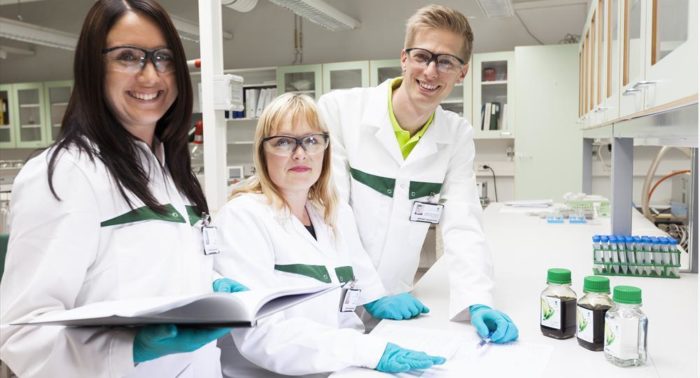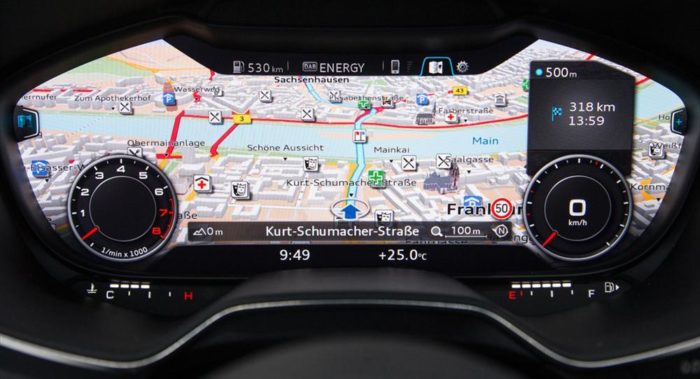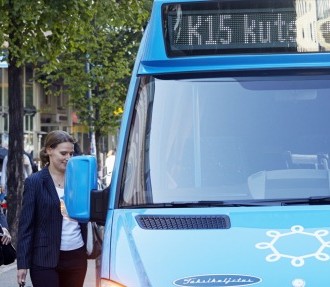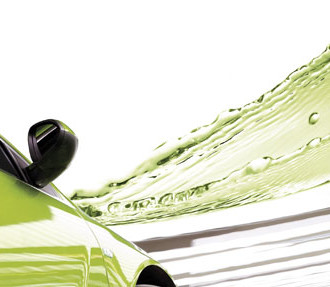It’s so common that it may have happened to you. You’re driving your car, come around a turn and hit a patch of ice. You were being careful, but there was no way to know that slick spot was there. Until now.
Detection systems for slick roads form one of the innovative solutions that Finland is contributing to the automotive industry. Others include wooden cars and interactive dashboard displays.
VTT Technical Research Centre of Finland has developed a novel slipperiness detection system for vehicles – it warns nearby drivers of road conditions. VTT took advantage of Finland’s unique convergence of technical prowess and climatic conditions to come up with their innovation.
“The idea came when we were analysing information from some other projects,” says Kimmo Erkkilä of VTT. “That led to thinking about how this data could be used to detect slipperiness or lack of grip in general.”
Modern vehicles already collect information related to driving conditions, such as tyre spin for traction control. In VTT’s slipperiness detection system, a vehicle notices a slick spot and warns the driver. In real time, that data is also sent to a server and shared with other drivers in the area who can see the slick spot on their GPS maps. Additionally, the system can even alert road authorities so they know a particular patch of road needs attention.
“Our project team consists of specialists in vehicles, ICT and traffic,” Erkkilä says. “VTT has quite a wide range of technical research, which helps us to combine the needed knowledge easily – even if research areas are not that closely related.”
Cars made of wood

Blue gloves, green fuel: UPM’s Biofore Concept Car with parts made from wood-based materials, runs on BioVerno, UPM’s novel, wood-based, renewable diesel fuel (jar at far right).Photo: UPM
Finland has a strong tradition of partnerships and interdisciplinary projects that leverage national advantages. Sometimes this leads in unexpected directions, like developing a wooden car.
The forestry company UPM teamed up with Metropolia University and Tekes, the Finnish Funding Agency for Technology and Innovation, to create the Biofore Concept Car for unveiling at the Geneva International Motor Show in March 2014).
“Renewable materials have smaller carbon footprints and are more sustainable versus their fossil-based counterparts,” explains Juuso Konttinen UPM’s vice president of new businesses and development. “They are also not as heavy as metal. A lighter car means less fuel consumption, fewer emissions and a smaller lifecycle carbon footprint.”
The car isn’t completely wooden, but many components have been replaced by wood-based materials such as plywood and tree pulp. The vehicle is roadworthy and street legal, and demonstrates that biomaterial can be used to improve environmental performance without sacrificing quality or safety.
Additionally, the modern diesel engine runs on UPM’s novel, wood-based, renewable diesel fuel. Even the design of the car comes from nature – its shape was inspired by the pinecone.
“Finland has a long history with wood-based materials and related science which gives an excellent foundation for developing new wood-based biomaterials,” Konttinen says. “The materials are a real sustainable alternative already today.”
Interactive dashboards

Audi is premiering the world’s first user-programmable instrument cluster with real-time 3D graphics, created using Finnish firm Rightware’s toolkit.Photo: Audi
Some of Finland’s pioneering ideas for the automotive industry are ready to be commercialised, but others are already in the market. The new Audi TT has the world’s first user-programmable instrument cluster with real-time 3D graphics, created with tools provided by the Finnish firm Rightware.
“Starting with our first commercial customer Audi we have rolled out the solution with several European premium car manufacturers,” says Rightware CEO Jonas Geust. “We have recently expanded geographically to Asia, Japan and the US.”
Drivers of the new Audi TT will enjoy images on their instrument panels which look like real materials – chrome gauges with dynamic lighting and shadows, for instance – thanks to the Finnish firm’s software expertise. Rightware has developed the Kanzi design toolkit to create such user interfaces.
“We expect the cost of the digital clusters will come down, and therefore we expect significant growth in demand,” continues Geust. “The digital clusters and in-vehicle infotainment systems will have more attractive user interfaces, which increase functionality but simultaneously reduce driver distraction.”
Now if a car maker adopts UPM’s wooden materials, VTT’s slipperiness detection system and Righware’s solutions to create a dashboard user interface, all these Finnish automobile innovations could find a home in one vehicle.
By David J. Cord, March 2014







